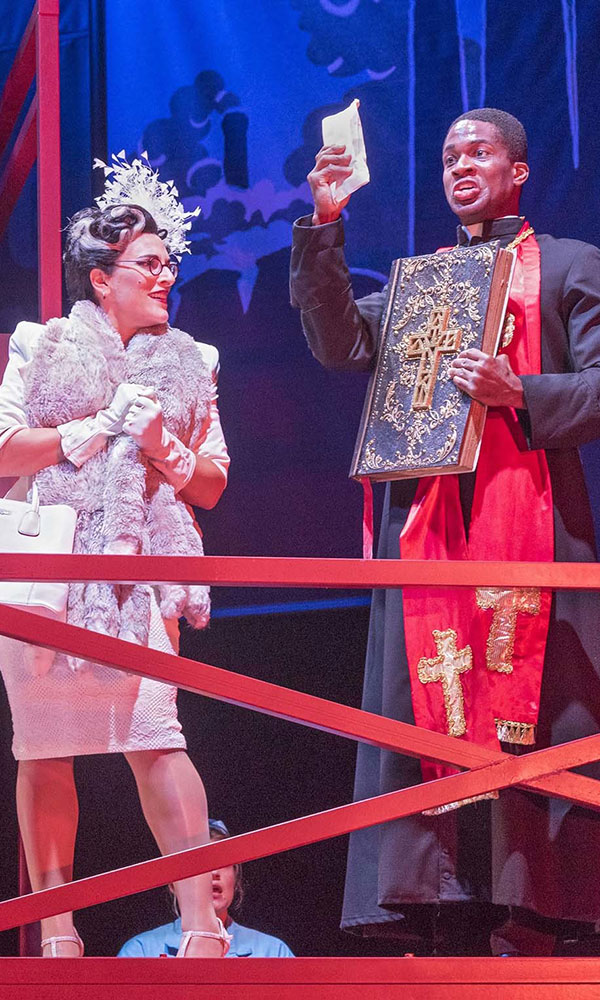The second most infamous night of theater happened eighty years ago, when the New Deal era Federal Theater Project pulled funding for Marc Blitzstein’s opera The Cradle Will Rock and had the doors of the theater locked on opening night. Producer John Houseman and director Orson Welles, refusing to be deterred, scrambled to rent another theater and piano and in a dramatic procession, walked the audience up to the new venue.
Due to Union rules then in place, the musicians could only appear on the stage, but the actors could not. Blitzstein himself took the stage, sat at the piano and played the opening song. From the audience, the actress playing the prostitute stood up and began to sing. The spotlight found her and the rest of the cast, as they stood up where they were to play their roles. This premiere was front page news.
It was the height of the Great Depression, the disparity of wealth in sharp relief. There was violence surrounding the forming of Unions, passions were high, as was corruption and naked greed, so an opera about these themes made our government nervous, which is why they pulled the funding.

It is rarely produced with full orchestration, as Blitzstein composed it. And it has never been commercially recorded. Bravo to Opera Saratoga for mounting and recording this exquisite production at The Little Theater in Spa State Park.
The story takes place in 1937 Steeltown USA, on the night of a Union Rally. A prostitute is arrested, after refusing to take money from a corrupt cop. By mistake, the anti-union Liberty Committee who represent different facets of the “respectable” community is also arrested. Their services have been paid for by Mr. Mister, who owns the Steel Plant. Through vignettes, we see how these citizens (clergy, pharmacist, physician, newsman) are bought off by Mr. Mister.
Opera Saratoga’s Artistic Director, Lawrence Edelson, did a masterful job in directing this true to the original version, keeping the original vision and humor intact. Set designer Martin T. Lopez designed the simple, multi-level set the same color as theater walls, allowing the performances to shine. Conductor John Mauceri did double duty, playing the role of The Clerk. Anya Klepikov’s costumes were brightly colored, but true to the era. The performances were outstanding, bringing every nuance of their character to life.
I am proud to repeat here what Director Edelson noted, to thunderous applause, before curtain. Funding for this production was made possible by The Kurt Weill Foundation for Music and the National Endowment for the Arts.


